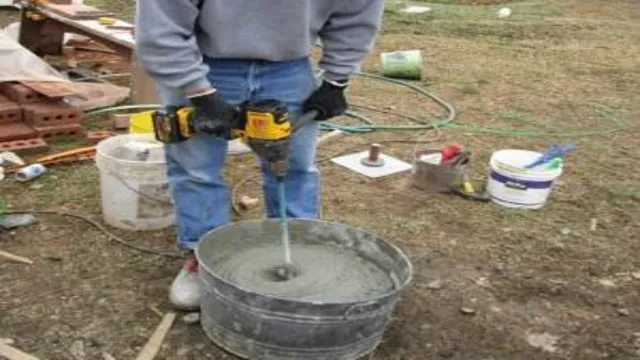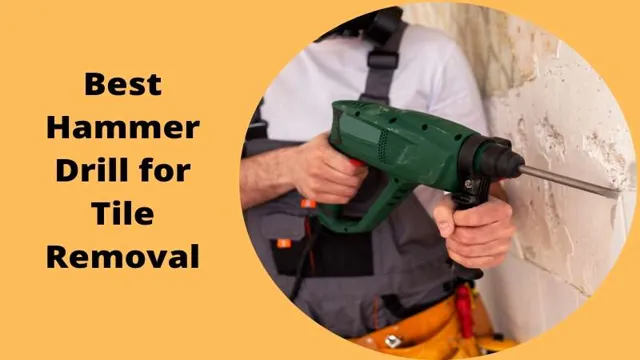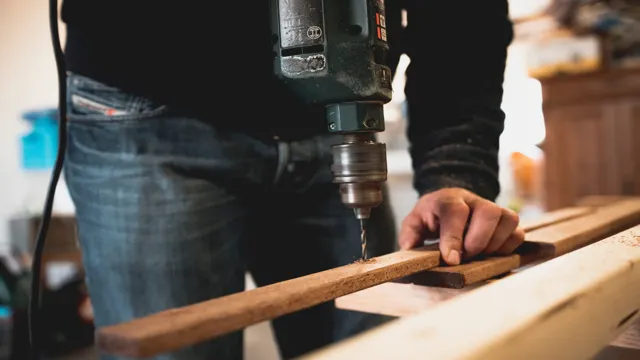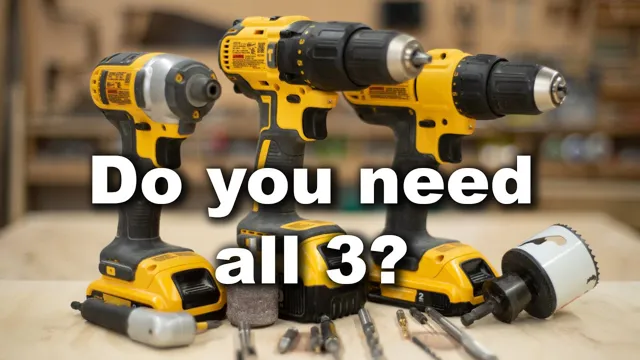Can I Use a Hammer Drill to Drive Screws? Tips and Tricks for Effective Drilling and Fastening.
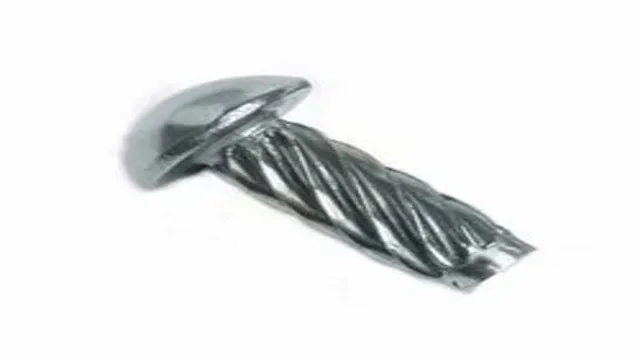
If you’re a DIY enthusiast, you might already know that a hammer drill is a versatile tool that you can use for everything from drilling holes in masonry to driving screws into wood or metal. Did you know that you can use your trusty hammer drill to drive screws like a pro? In this blog post, we’ll show you how to use a hammer drill to make quick work of screwing in fasteners, whether you’re hanging picture frames or building a bookshelf. We’ll provide you with all the tips and tricks you need to get the job done efficiently and effectively, so grab your hammer drill and let’s get started!
What is a Hammer Drill?
If you’re wondering whether you can use a hammer drill to drive screws, the answer is yes, but it might not be the best option. A hammer drill is designed for drilling into hard surfaces such as masonry or concrete, and it uses a mechanism that delivers a rapid hammering action as the bit rotates. While this can be useful for creating pilot holes in tough materials, it’s not ideal for driving screws as the hammering action can cause the screw to spin out of control or damage the surface you’re working on.
Instead, it’s best to use a regular drill driver or an impact driver, which can deliver more precise and controlled power for screw driving. So, if you want to get the job done right, it’s important to choose the right tool for the job.
Description of a Hammer Drill
A hammer drill is a versatile power tool that’s cherished by DIYers and professionals alike. Essentially, it’s a drill that delivers a rapid, forceful hammering action to penetrate hard surfaces like bricks, masonry, and concrete. The tool typically boasts a powerful motor and a specialized mechanism that produces a hammering effect as it drills, thanks to a specially designed clutch that moves back and forth.
Unlike a regular drill, a hammer drill can make holes in tough materials with increased speed and precision, as well as chip away at the material more efficiently. Depending on the type and model, a hammer drill may come with several useful features like adjustable speeds, torque control, and a depth gauge. Whether you’re working on a home improvement project or a large-scale construction site, a hammer drill is a must-have tool in your arsenal.
So, if you’re looking to take on harder materials, don’t hesitate to invest in a hammer drill that will make your work faster, more efficient, and less frustrating.
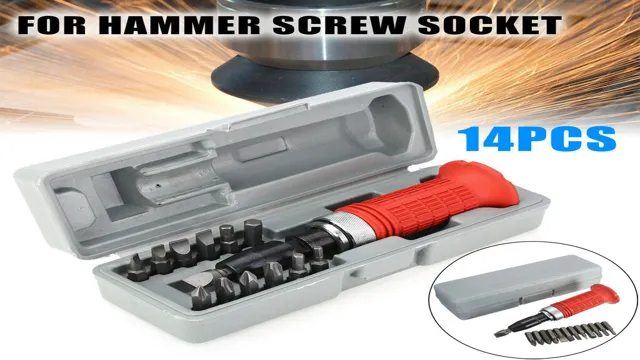
How it Works
If you’re a DIY enthusiast or spend a lot of time on home renovation projects, then one tool that you must have is a hammer drill. It’s a versatile power tool that makes drilling into hard surfaces like concrete and brick walls much easier. The hammer drill works by creating a hammering motion that helps the bit chip away at the surface, while also rotating to create a hole.
It’s perfect for jobs that require a bit of force to get the job done. Whether you’re mounting shelves or installing new light fixtures, a hammer drill is a great tool to have in your arsenal. So, why not invest in one today and see how it can transform your DIY projects?
Can a Hammer Drill Drive Screws?
“Can a hammer drill drive screws?” This is a common question people ask when they’re looking for a tool to help them with all their DIY projects. The answer is yes, a hammer drill can drive screws, but it’s not the best tool for the job. While a hammer drill can create enough force to drive screws into wood or other materials, it’s designed for drilling, not driving.
Using a hammer drill to drive screws can result in stripped or damaged screws, making the project take longer and become more challenging than it needs to be. It’s best to use a drill/driver or an impact driver for tasks such as driving screws, as they are designed to do so more efficiently and effectively. However, if you don’t have these tools on hand, a hammer drill can still get the job done with a little extra care and attention.
Always use the correct bit size and adjust the drill’s speed and torque accordingly to prevent stripping or damaging the screws, and you’ll be well on your way to creating the perfect woodworking project.
Advantages
If you’re wondering if a hammer drill can drive screws, the answer is both yes and no. While a hammer drill is great for drilling through tough surfaces like concrete, its high speed and torque can make it difficult to control when driving screws. However, some hammer drills have clutch settings that allow you to adjust the torque output and make it more suitable for driving screws.
Additionally, hammer drills tend to be more powerful than regular drills, making them a better choice for heavy-duty projects that require more drilling power. So, while a hammer drill may not be the ideal tool for screw driving, it can still get the job done with the right clutch settings and a bit of practice. Just be sure to use the right type of bit and size for the screw you’re working with to avoid any mishaps.
Disadvantages
While a hammer drill can be useful for drilling into tough materials like masonry or concrete, it’s not the best tool for driving screws. One of the main disadvantages of using a hammer drill for screw driving is that it can damage the screw head or strip the threads. Additionally, hammer drills are designed for high torque and low speed, which means they don’t provide the precision and control needed for delicate screw driving.
While it’s possible to use a hammer drill to drive screws in certain situations (like when working with thick or uneven materials), it’s generally not recommended. For screw driving tasks, it’s best to use a dedicated screwdriver or impact driver. These tools provide the right amount of torque and speed, and they won’t damage your screws.
When to Use a Hammer Drill for Screws
A hammer drill can be a useful tool to use when driving screws, especially when working with tough materials like concrete or masonry. However, it’s important to note that a hammer drill is not designed specifically for driving screws, as it can cause damage to the screw and the material you’re working with. Instead, if you’re looking to drive screws efficiently and accurately, it’s best to use a regular power drill or an impact driver.
These tools are specifically designed for driving screws and won’t cause any unnecessary damage to the screw or the material. If you need to drill holes as well as drive screws, then a hammer drill may be a better option, as it can do both tasks efficiently. Just remember that when driving screws with a hammer drill, you need to be extra careful not to apply too much pressure or force, as this can damage the screw or strip the threads.
Overall, it’s best to choose the right tool for the job at hand to ensure that you get the best results.
Alternatives to Using a Hammer Drill for Screws
If you’re wondering whether you should use a hammer drill to drive screws, the answer is yes, but there are alternatives that may be more suitable. Hammer drills can certainly handle drilling holes and driving screws, but they’re more suited for stone and concrete. Using a hammer drill for wood or drywall may lead to overkill and damage to the surface.
Instead, consider using a power drill or impact driver. Both tools are lighter, faster, and easier to control when driving screws into wood, drywall, or other soft materials. Power drills have adjustable torque settings which allows you to avoid damaging or stripping screws.
Impact drivers, on the other hand, use a combination of rotations and vibrations to drive screws quickly and efficiently, making them ideal for large projects. Ultimately, while hammer drills can drive screws, there are better options for different surfaces. So, assess your project’s needs and select a tool that is appropriate for the job.
Screwdrivers
When it comes to DIY projects, using a hammer drill may not always be the best option for screws. Luckily, there are alternatives that can get the job done just as effectively. One option is to use an impact driver, which applies a quick rotational force to the screw and makes it easier to drive it in.
Another alternative is to use a cordless screwdriver, which is lightweight and easier to handle than a drill. Plus, with adjustable torque settings, you can ensure that you don’t drive the screw in too deep. No matter what you choose, always make sure to use the right size and type of bit for your screws, and take your time to ensure that everything is secure and properly aligned.
By using the right tool for the job, you can make your DIY projects safer and more efficient.
Cordless Drills
If you are tired of using a hammer drill for screws, there are several alternatives that you can try. Cordless drills are a great option, and they offer several advantages over hammer drills. For instance, they are typically smaller and lighter, making them easier to use for extended periods without fatigue.
Additionally, they can be used for a variety of tasks, including driving screws, drilling holes, and even mixing paints. Best of all, cordless drills don’t require a power outlet, so you can take them anywhere and use them without worrying about cords getting in the way. With so many benefits, it’s easy to see why cordless drills are quickly becoming the go-to tool for DIY enthusiasts and professionals alike.
So, the next time you need to drive screws, skip the hammer drill and pick up a cordless drill instead.
Conclusion
In conclusion, using a hammer drill to drive screws is like using a Ferrari to go grocery shopping – it might get the job done, but it’s definitely not the most efficient or practical choice. So unless you’re in a pinch and don’t have any other tools at your disposal, it’s probably best to stick with a trusty screwdriver or a power drill designed for driving screws. Save the hammer drill for when you need to break through tough materials like masonry or concrete.
Happy DIY-ing!”
FAQs
Can a hammer drill be used to drive screws?
Yes, a hammer drill can be used to drive screws, but it may not be the best option as it can cause damage to the screw head.
What is the difference between a regular drill and a hammer drill?
A regular drill rotates the bit to create a hole, while a hammer drill uses a piston-like motion to also create a pounding force.
Can I use a regular drill to drive screws?
Yes, a regular drill can be used to drive screws, but it may take longer and require more force than a screwdriver or impact driver.
What type of drill bit should I use to drive screws with a hammer drill?
A screwdriver bit or a Phillips head bit is recommended for driving screws with a hammer drill.
How do I adjust the clutch on my hammer drill for driving screws?
Refer to your hammer drill’s instruction manual for specific instructions on adjusting the clutch for driving screws.
Can I use an impact driver to drive screws instead of a hammer drill?
Yes, an impact driver is designed specifically for driving screws and can be more efficient than a hammer drill.
What safety precautions should I take when driving screws with a hammer drill?
Always wear safety glasses and work gloves, and make sure the drill is securely mounted or held in place before use.

